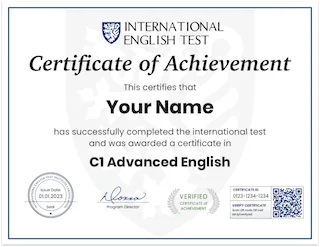CV vs resume: Explore our comprehensive guide that addresses the distinctions between a CV and a resume, and learn when to utilize each one.
Is there a distinction between a CV and a resume? Why do some applicants submit a CV while others opt for a resume? Is one of them objectively superior to the other, or are they essentially interchangeable terms? Can “resume” be used interchangeably with “CV,” and vice versa?
In just 5 minutes, you’ll grasp all the essential details about the disparity between CVs and resumes.
This guide will cover:
– The definition and example of a CV (Curriculum Vitae) and a resume.
– A comparative analysis of the differences between a CV and a resume.
– Guidelines on when to use a CV or a resume when applying in the US or Canada.
– The meaning of CV outside of North America and the appropriate document for international applications.
What is your English level?
Find out your A1 A2 B1 B2 C1 C2 level of English with our quick, free online test.
The Primary Distinction Between a CV and a Resume
A resume is a concise one to two-page document summarizing essential details about your professional experience, education, and skills. On the other hand, a CV (Curriculum Vitae) is a more extensive document providing a comprehensive overview of your entire career trajectory. Typically, a resume is employed for job searches, while a CV is primarily used for academic purposes.

What Is a CV?
A CV, an abbreviation for Curriculum Vitae (Latin for “course of life”), provides a comprehensive overview of your entire career. While typically spanning 2–3 pages, it can extend to over 10 pages if required. A CV details your education, professional journey, publications, awards, and more. Its usage is limited to academic applications in the USA and Canada.
Curriculum Vitae Sample
As evident, the content included in a CV is highly detailed and thorough, featuring numerous sections and a format devoid of bullet points. Given that a CV represents the course of life, it’s unsurprising that it tends to be lengthy. Here is an exhaustive list of sections you might consider incorporating when crafting a CV:
- Contact information
- Research objective, personal profile, or personal statement
- Education
- Professional academic appointments
- Books
- Book chapters
- Peer-reviewed publications
- Other publications
- Awards and honors
- Grants and fellowships
- Conferences
- Teaching experience
- Research experience, lab experience, or graduate fieldwork
- Non-academic activities
- Languages and skills
- Memberships
- References

What Is a Resume?
A resume (or résumé, derived from the French “to sum up”) is a brief and succinct document utilized for job applications in the US and Canada. The primary objective of a resume is to offer recruiters a concise summary of the candidate’s professional history. An effective resume is tailored to a specific job and typically spans 1–2 pages.
What needs to be included in a resume?
- Contact details, including job title
- Summary or objective statement
- Professional work experience
- Educational background
- Skills overview
- Additional details in the resume

What Is the Difference Between a CV and a Resume?
The distinction between a CV and a resume can be found in their length, format, and purpose. CVs have no specified length limit, while resumes are generally limited to one or two pages. A CV provides a comprehensive overview of the candidate’s academic journey, while a resume focuses on summarizing skills and work experience.
CV Versus Resume: Comparison
Now, let’s delve deeper into the disparities between a resume and a CV:
1. Length – This is the foremost and most apparent difference between the two. A CV tends to be longer, possibly spanning two or three pages (with no specific page limit), contingent on your experience, whereas a resume is usually limited to one page.
2. Layout – A CV serves as a comprehensive account of your academic and professional background, while a resume is a concise document spotlighting your professional experience.
3. Purpose – A CV is tailored for applying to academic positions, whereas a resume is versatile and can be utilized to apply for jobs across various industries.
Are you C1 Advanced English?
Get your C1 Advanced English certificate now!
✓ Add your certificate to your resume
⭐ ⭐ ⭐ ⭐ ⭐
Differences Between Curriculum Vitae and Resume: Global Variances and Appropriate Usage
The distinctions in resume/CV meanings are specific to the United States. In other nations, the term “resume” either doesn’t exist or is used interchangeably with “CV”:
– Throughout Europe and New Zealand, “CV” is synonymous with the US resume, representing a concise, targeted document used for job applications. The term “resume” is not in use, and there are only slight, region-specific variations between a New Zealand or European CV and an American resume.
– In Australia and South Africa, “Curriculum Vitae” and “resume” are interchangeable synonyms, referring to a concise one to two-page document.
– In South Asia, job seekers might be required to submit a somewhat different document known as a biodata. This document includes more personal and “biographical” data such as date of birth, gender, race, ethnicity, marital status, and salary. This format is commonly used in India and Bangladesh. However, if a South Asian employer specifically requests a “resume” or a “CV,” it is advisable to provide a document following American resume conventions rather than a biodata format.
What is your English level?
Find out your A1 A2 B1 B2 C1 C2 level of English with our quick, free online test.





